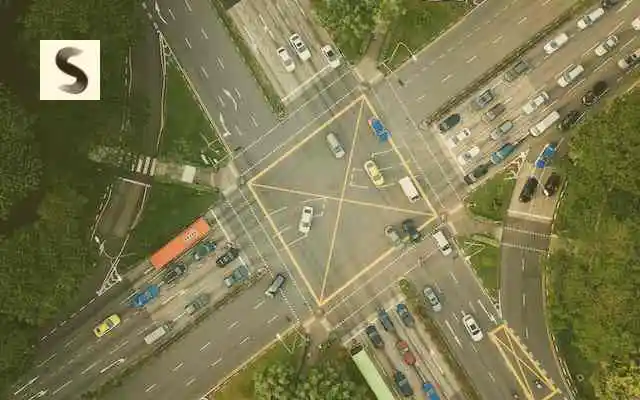The streets and highways we navigate daily are teeming with many traffic signs. A red and white triangular sign often spotted at intersections is essential. Misinterpreting this sign can lead to confusion, chaos, and accidents. Therefore, comprehending this road sign’s precise meaning is crucial for novice and experienced drivers alike.
The Significance of Traffic Signs
Traffic signs are a universal method of communication on the roads. They instruct, warn, and provide relevant information to drivers, facilitating safe and orderly traffic movement. Understanding these signs isn’t simply a prerequisite for carrying a motorist’s license but an ongoing demand for road safety.
Decoding the Red and White Triangular Sign
This particular road sign is known as the “Yield” sign. It is invariably triangular, featuring a red border and a white interior. The yield sign is frequently positioned at or near intersections, ensuring a smooth and safe transition of vehicles between different routes.
Yielding the Right-of-Way
The yield sign instructs drivers to give way to other vehicles. It means drivers must slow down or stop to let other drivers continue without hindrance. It is not a stop sign—instead, it authorizations motorists to yield the right-of-way, acting only when it’s safe.
Understanding Intersection Dynamics
Intersections are vital points on the road where different routes converge. Yield signs at intersections require drivers to maintain vigilance and adapt their driving according to traffic flow.

The Role of the Yield Sign in Traffic Regulation
The yield sign is more than a traffic directive; it plays a crucial role in traffic regulation. Understanding and respecting this sign can make a significant difference in enhancing road safety and traffic flow.
The Importance of Complying with Yield Signs
Failure to comply with yield signs can lead to traffic disruptions, accidents, and legal penalties. Therefore, every driver must understand and follows this traffic rule diligently.
Conclusion
Understanding the meaning of the red and white triangular sign at intersections, also known as the yield sign, is of utmost importance for drivers around the globe. It isn’t just a symbol painted on a metal sheet; it’s a cornerstone of traffic regulation and road safety.
Yielding is a simple yet powerful act that ensures fluidity and orderliness on the road, potentially saving countless lives. As responsible drivers, we must understand, respect, and adhere to this rule, making our streets safer for everyone.
FAQs:
What does a red and white triangular sign mean at an intersection?
The red and white triangular sign, known as the yield sign, means drivers must give way to other vehicles. They should slow down or stop if necessary to let other drivers proceed safely.
Is a yield sign the same as a stop sign?
No, a yield sign isn’t the same as a stop sign. While a stop sign requires drivers to halt entirely before proceeding, a yield sign asks drivers to slow down and only stop if needed to let other drivers move.
Where is the yield sign typically located?
The yield sign is typically located at or near intersections. It may also be placed where a road merges into another or in areas with a high possibility of traffic conflict.
What happens if a motorist fails to misbehave with a yield sign?
Failing to adhere to a yield sign can lead to traffic disruptions and accidents and, in many jurisdictions, may also result in legal penalties such as fines or points on a driver’s license.
Why is it important to understand the meaning of the yield sign?
Understanding the yield sign’s purpose is critical for road safety and smooth traffic flow. It helps prevent accidents and misunderstandings on the road.
Is the yield sign internationally recognized?
Yes, the yield sign is internationally recognized. Although there might be slight variations in design, its basic form—a red and white triangular sign—remains the same worldwide, indicating the need to yield.
Can a yield sign be placed in places other than intersections?
Yes, yield signs can also be placed where one road merges into another or where the road conditions necessitate yielding.
Are there specific rules about who should yield at intersections?
Generally, the motorist who arrives first at a meeting has the right-of-way. Still, if two vehicles come contemporaneously, the motorist on the left wing should yield to the motorist on the right. It’s also important to note that regardless of these rules, any driver faced with a yield sign must give way.
What role does a yield sign play in promoting road safety?
The yield sign is essential for maintaining orderly traffic movement. It minimizes the risk of accidents by ensuring drivers take turns and don’t disrupt traffic flow, especially at intersections or merging lanes.
Is knowledge of the yield sign important for novice drivers?
Absolutely. A solid understanding of all road signs, including the yield sign, is fundamental to road safety. It’s a crucial part of learning to drive and remains vital throughout one’s driving lifetime.
